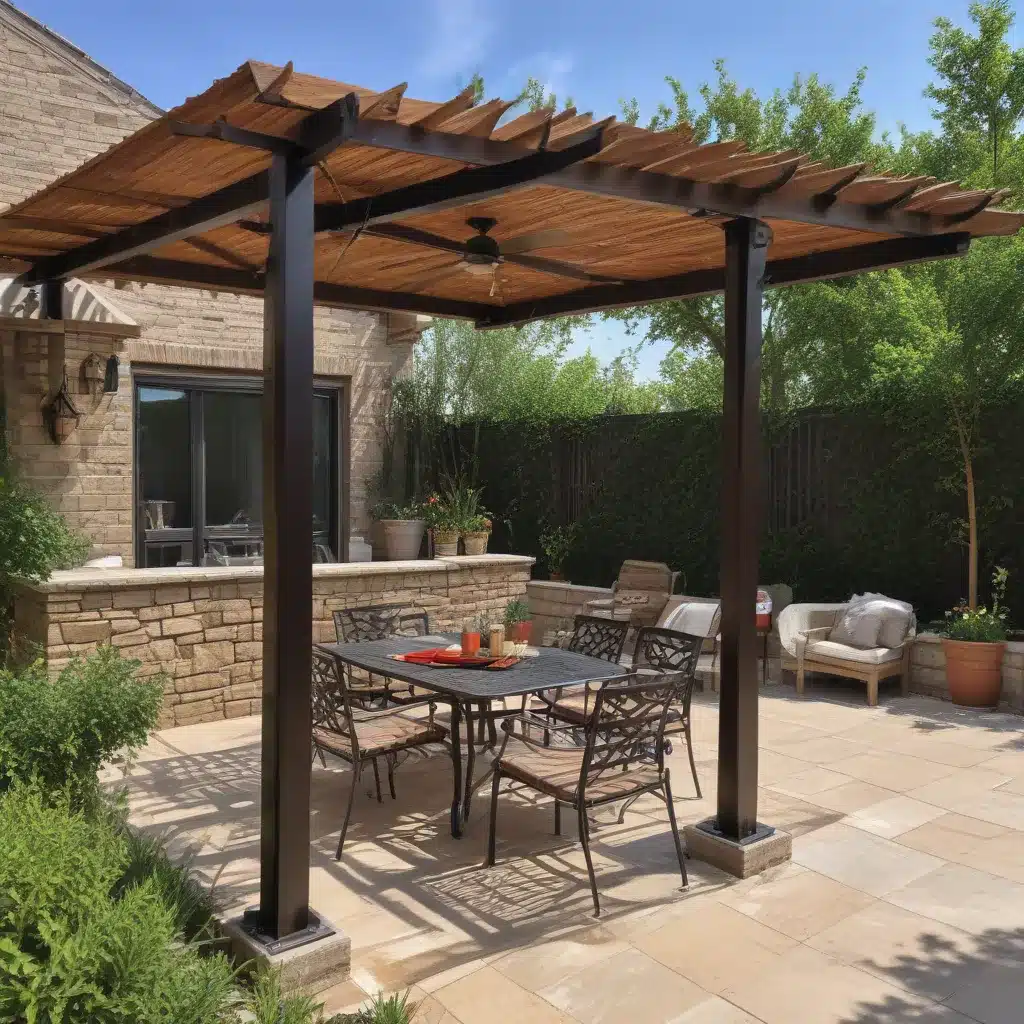
As an experienced outdoor living consultant, I’ve seen firsthand how the choice of patio paving materials can have a significant impact on the temperature and overall comfort of an outdoor living space. One key factor that is often overlooked is the concept of radiative cooling, and how the background materials surrounding a patio can influence its thermal performance.
Patio Paving Trends
Popular Patio Paving Materials
Homeowners today have a wide range of patio paving options to choose from, each with its own unique advantages and drawbacks. From classic natural stone and brick to contemporary concrete and pavers, the selection can be overwhelming. Understanding how these materials interact with the surrounding environment is crucial for creating a comfortable and energy-efficient patio.
Advantages and Disadvantages of Different Paving Options
Natural stone, such as flagstone or travertine, is a popular choice for its timeless beauty and durability. However, these materials can absorb and retain heat, potentially making the patio feel uncomfortably warm on sunny days. Conversely, concrete and light-colored pavers tend to have a higher solar reflectance, allowing them to stay cooler to the touch.
Emerging Trends in Patio Design
In recent years, there has been a growing interest in incorporating radiative cooling principles into patio design. This involves selecting materials and incorporating design elements that can effectively reflect or emit thermal radiation, helping to lower the overall temperature of the outdoor living space.
Outdoor Design Ideas
Integrating Radiative Cooling Concepts
One way to leverage radiative cooling is by choosing patio paving materials with a high solar reflectance index (SRI). This measure indicates a material’s ability to reflect sunlight and avoid absorbing heat. Highly reflective materials, such as light-colored concrete or pavers with special coatings, can significantly reduce the patio’s surface temperature.
Creative Patio Layout Designs
The layout and orientation of the patio can also play a role in radiative cooling. Incorporating shade structures, strategically placed landscaping, or even water features can help to create cooler microclimates within the outdoor living space. By carefully considering the placement of these elements, homeowners can enhance the natural cooling effects.
Complementary Landscaping Elements
Integrating the right landscaping elements can further improve the radiative cooling performance of a patio. Drought-tolerant, light-colored plants that are native to the local climate can help to reduce the overall heat absorption and promote evaporative cooling. Additionally, using reflective mulch or gravel around the patio can contribute to the overall cooling effect.
Installation Techniques
Proper Patio Foundation Preparation
Ensuring a stable and well-draining patio foundation is crucial for maximizing the effectiveness of radiative cooling strategies. A solid base, with proper slope and drainage, will prevent water accumulation and minimize the risk of heat retention in the underlying soil.
Efficient Paving Installation Methods
The installation techniques used for the patio paving can also impact its thermal performance. For example, using a sand-based installation method instead of a mortar-based one can allow for better air circulation and prevent the patio from becoming a heat sink.
Ensuring Proper Drainage and Slope
Proper drainage and slope are essential for preventing water from pooling on the patio surface, which can contribute to increased heat absorption and retention. By carefully designing the patio’s drainage system and ensuring a slight slope, homeowners can promote the natural flow of water and enhance the overall cooling effects.
Maintenance Guidelines
Cleaning and Preserving Patio Surfaces
Regularly cleaning and maintaining the patio surface is crucial for preserving its radiative cooling properties. Removing dirt, debris, and any organic growth can help to maintain the material’s high solar reflectance and prevent the absorption of heat.
Addressing Common Patio Issues
Homeowners should also be aware of common patio issues that can impact radiative cooling, such as cracks, unevenness, or the growth of moss or algae. Addressing these problems promptly can help to maintain the patio’s optimal thermal performance.
Extending the Lifespan of Patio Pavements
Proper maintenance and care can also help to extend the lifespan of patio pavements, ensuring that the radiative cooling benefits are enjoyed for years to come. This may include sealing, re-surfacing, or applying protective coatings to the paving materials as needed.
Cost Comparisons
Budgeting for Patio Construction
When it comes to patio construction, the initial cost is often a significant factor for homeowners. However, it’s important to consider the long-term benefits and energy-saving potential of incorporating radiative cooling strategies into the design.
Factors Influencing Patio Costs
The cost of a patio can be influenced by a variety of factors, including the choice of materials, the complexity of the design, and the specific installation requirements. Homeowners should carefully evaluate the upfront costs as well as the potential energy savings and increased comfort that radiative cooling can provide.
Strategies for Cost-Effective Patio Design
By leveraging radiative cooling principles, homeowners can potentially reduce their long-term energy costs for cooling the outdoor living space. Additionally, clever design choices, such as incorporating landscaping elements or using cost-effective paving materials with high solar reflectance, can help to create a comfortable and energy-efficient patio without breaking the bank.
Ultimately, the influence of background materials on patio temperature is a crucial consideration for homeowners seeking to create an outdoor living space that is both aesthetically pleasing and energy-efficient. By understanding the principles of radiative cooling and incorporating the right design elements, you can transform your patio into a comfortable and sustainable oasis. For more information on patio paving, landscape design, and outdoor living solutions, visit cincinnatipatiopaving.com.

